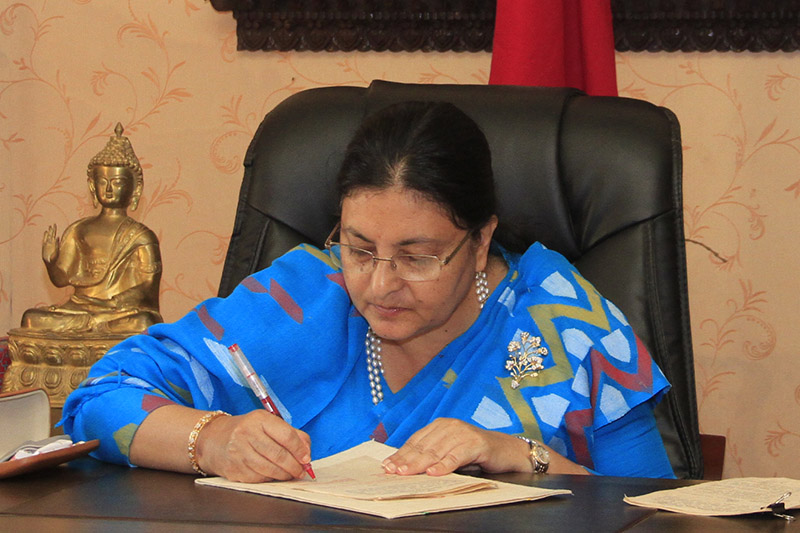Eighth amendment to Land Act imposes new land ceiling
Kathmandu, February 14
The Land (Eighth Amendment) Act-2020, authenticated by President Bidhya Devi Bhandari on the recommendation of the House of Representatives stipulates a provision regarding the regulation of exception granted to owning or possessing land in excess of ceiling.
Land ceiling limit for a person or family is 10 bigha in the Tarai, 25 ropani in Kathmandu valley and 70 ropani in hilly regions as per Section 7 of the act. However, this provision shall not be applicable to the land owned and possessed by the Government of Nepal, district coordination committees, rural municipalities or municipalities and educational or health institutions, industries and foreign institutions as prescribed by the federal government.
According to new amendments made to the act, if any industry, enterprise, company or organisation has been possessing and using land in excess of the ceiling without prior approval of the federal government, it shall have to submit an application to the authority concerned within three months from the date of commencement of these amendments mentioning the reasons it needed the land beyond the prescribed ceiling.
“If the contents stated in the application are found reasonable, the federal government may grant an approval to possess the land in excess of ceiling by charging fee of Rs 150,000 per bigha in Tarai and inner Madhesh, Rs 50,000 per ropani in the valley and Rs 10,000 per ropani in hilly region,” Section 12a states. However, the federal government shall not grant such an approval to any industry, enterprise, company or organisation, which are not in operational state.
If the approval is granted, the land in excess of ceiling shall be used only for the purpose for which such a land was allowed to be used. Amendment in the act also envisions a seven-member monitoring and inspection committee headed by the chief of the concerned district coordination committee to ensure that the land granted to be possessed in excess of ceiling is not misused.
The act has stipulated a provision for providing land to landless squatters. According to Section 52 of the act, landless squatters, who have been using government or unrecorded land, shall be entitled to certain parcel of such land or any other government land. The federal government shall maintain coordination with the concerned provincial government and local level prior to making any decision while providing the land to landless squatters. However, the land located within the area of religious, cultural and strategic importance; land that needs to be kept secured in view of natural disaster, disaster management and environment protection; and public lands may not be provided to anyone.
Land provided to landless squatters under this law may not be transferred to anyone or otherwise disposed of in any form for a period of at least 10 years. The government may form a commission to identify the landless squatters by conducting field study and data collection before distributing land to the beneficiaries. The act has defined a landless squatter as a person or any his/her dependent family member who does not have land under his/her ownership for generations within Nepal and cannot afford to pay money for the land from his/her income, resource or effort.






